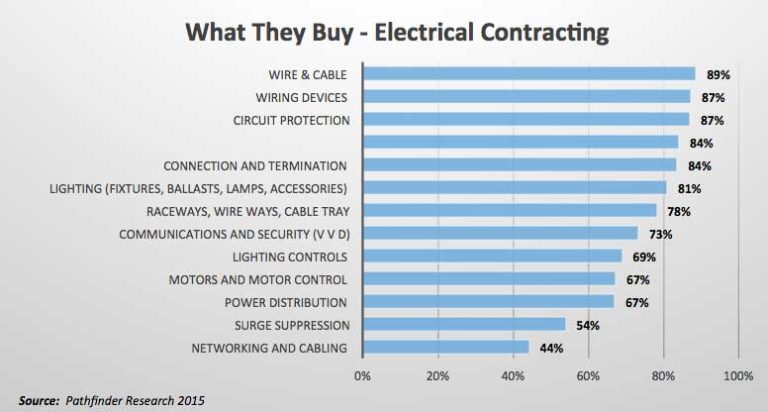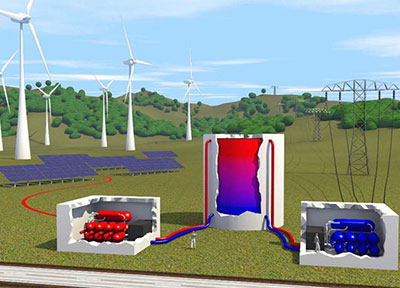Allan Bozek Discusses EngWorks, Hazardous Locations, and Developing Courses for Remote Learning

Sept 2, 2021
By Blake Marchand
EngWorks was formed in 2004 as an electrical engineering and consulting firm by Allan Bozek, “After a short time we realized there was a niche in hazardous locations, in particular in hazardous area classification design requirements for various facilities. And also helping people understand just how the Canadian Electrical Code applies to hazardous locations.”
Given the complexity of hazardous locations, Bozek saw a need for education while working in the field and began developing training courses.
“Initially I was supporting other companies with hazardous locations design, it became quite clear that if you’re answering the same questions over and over, there’s a lack of knowledge in the area and that we need to increase the industry knowledge,” Bozek said, which is why they began offering training services.
They offer instructor led courses as well as open registration, with 12 courses and are now offering online courses.
“We always had the idea of taking these courses online on the back burner. The trouble was finding a good platform to do it. Prior to 2020 there wasn’t a platform we felt was a good way of delivering the courses, but that all changed.”
The pandemic provided emphasis on virtual learning and EngWorks saw avenue to improve their courses and offer them to a wider audience. The in-person format limits them to a certain geographic area, “when you start adding travel costs and all the additional time required to do a course in Ontario or Newfoundland, it almost prices you right out of the market.”
“When we move our courses online these travel restrictions are removed, access is provided to anyone who wants it and needs it. But that requires a different marketing strategy, too.”
They partnered with the Alberta Electrical Alliance earlier this year, which Bozek says is part of their new marketing strategy and will help them expand their reach.
“It’s been quite a learning over this past year and a half, but I think we’re doing a great job of managing.”
The online format also allows them to continually update the subject matter and offer application tools that people can use on the job to help them meet code requirements.
Currently they have two available online: Hazardous Locations Supermini Course and Hazardous Locations Fundamentals Course with three more planned for this year: ExHac Hazardous Area Classifications Course, Intrinsic Safety Course, HazLoc Fundamentals NEC Standards Course.
What goes into developing the courses you offer?
“It starts with basic knowledge. Our courses are designed around industry standards. We look at the various API standards, the NFPA standards, and the IEC standards, which we highly endorse. And we get involved in these organizations, and we get involved in the development of these standards. So, we have first-hand input into what’s going on and it gives us first-hand view into what direction these standards are going. Because these standards are the template for what we do in hazardous locations.”
Two System Classification
Bozek explain that a lot of confusion in hazardous locations traces back to when IEC design products were incorporated into the electrical code in 1998. Section 18 has gone through several updates and clarifications throughout the past 25-years of code cycles, which Bozek said has led to a lack of understanding, “I still find many people who are uncomfortable or are not aware of the requirements, or the ability to use both Division products and Zone products in Zone classified facilities or Division classified facilities. We got this mixed bag of requirements that people have a hard time grasping.”
“Once we adopted the Zone system, we basically had to re-write Section 18. Section 18 has had more revisions than any other section of the code of the past 25-years, without question. Virtually every code cycle had new requirements and even now, we’re looking at these requirements and trying to clarify them.”
“The only way to resolve this confusion is through education. This is why we created the EngWorks School of Hazloc,” he said.
In the 2021 version of the code, for example, Section 18 appears to have a new list of ceiling requirements, but Bozek said, “the ceiling requirements have not changed, they’ve just been clarified. Because they were so nebulous and confusing, the Section 18 committee decided we had to fix it.”
The irony for Bozek is that the attempts to clarify the section ultimately cause further confusion.
“And, of course,” he reiterated, “the only way to resolve those issue is through training.”
“This is the real benefit of the online training platform. We can modify our courses in real time, so anytime someone signs up for one of our courses, they’re getting the latest and the greatest in hazardous locations. That’s not always true when you’re doing the instructor led courses.”
“The opportunity to present up-to-date information and improve upon it is just wonderful.”
New ExHAC Hazardous Area Classifications Course
“One of the biggest challenges withing hazardous locations is doing the Hazardous Area Location Designs. I work closely with E-Safe of Ontario –over and over again, we find the classification design done for a particular product, or a particular facility lacks the most basic information. Which implies the people doing the classification design are not really competent in the area. And this is problematic – we’ve recognized this for many years. In fact, in 2015, we inserted some new rules into the Canadian Electrical Code to ensure the Area Classification Designs were done to the appropriate standard. This is where Appendix L came into the Canadian Electrical Code.”
“Appendix L defines how a hazardous area classification design should be done, how it should be documented, the type of information you need to provide when looking for professional certification, “Appendix L explains it all – but this course goes way beyond Appendix L. It basically tells you what you need to know about doing your classification design and we based it around IEC standards, which are applicable worldwide.”
The course is a combination of an online training, which provides guidance to perform a classification design, along with a calculation tool. The calculation is all based on IEC 60079-10-1.
It takes all the complex calculations in the standard and provides a tool so that you can easily do analysis, create designs, and document design in real time.
“In addition to that, we are also incorporating the IEC standard into the training course. They will have access to the standard, training on the standard, and they will have an application tool to help them use the standard. Our intent is to market this course worldwide because there’s a worldwide market.”
The course is expected to launch at the end of September and will be designed in accordance with IEC 60079-10-1 for classifying areas where an explosive gas atmosphere may exist.
“We see this as an innovation,” Bozek said with respect to developing comprehensive courses that also include tools/applications that can be used on the job. Going forward they will continue to add similar tools that can be used in the field to other courses they offer and develop. They are planning on developing a course on intrinsic safety, which will include an application to document circuit design to help with code compliance.
“Now we have immediate access, we can incorporate improvements as we go along. The product and the course is only going to get better and better over time.”
The Importance of Safety and Regulations
Given the complexity of the electrical code and safety considerations in hazardous locations, along with the changes Section 18 has gone through over the past 25-years, Bozek stressed the importance of strong regulations on safety and training.
“There’s a lot of misunderstanding associated with hazardous locations and that impacts explosion safety within operating environments – when you’re dealing with safety you can’t be complacent, you have an obligation to get training. In other jurisdictions in the world, you’re required to get training before you even enter into a classified area.”
Looking at Europe, for example, additional training for hazardous locations is regulated by law, which provides an additional level of certification and safety. Ultimately, Bozek said, “Mistakes are made, and if it’s not caught by an inspector – or even if inspectors aren’t confident working in hazardous locations – you can end up with large gaps in explosion safety.”
















